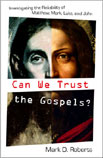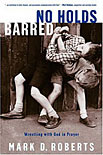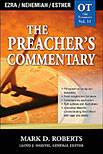« How Should We Evaluate the Antiquity of the Gospel Manuscripts? | Home | Do the Gospel Manuscripts Misquote Jesus? »
The Quantity and Quality of Textual Variants
By Mark D. Roberts | Wednesday, June 27, 2007
Today’s post, as well as several posts to come, are excerpts from my new book, Can We Trust the Gospels? Investigating the Reliability of Matthew, Mark, Luke, and John.
Skeptics who try to cast doubt upon the reliability of the New Testament manuscripts point to the apparently large number of variants they contain. Bart Ehrman, for example, in Misquoting Jesus, suggests that there are 200,000 to 400,000 variants among the New Testament manuscripts. He adds, dramatically, “There are more variations among our manuscripts than there are words in the New Testament.” That sounds ominous, doesn’t it? But, in fact, the data give us no reason to doubt the reliability of the manuscripts. Let me explain why.
We have such a large number of variants because there are so many extant manuscripts. Considering that the four Gospels contain a total of 64,000 words, and we have about 2,000 manuscripts of the Gospels, that’s a lot of potential variants. But as I’ve already shown, having many manuscripts actually increases the likelihood of our getting back to the original text. It also adds to the number of variants, however, which can sound negative to one who isn’t familiar with text-critical issues.
Let me suggest a more hypothetical example that might make clear what I’m saying. This book contains almost 50,000 words. Suppose I asked two people to make copies of this book by hand. Suppose, further, that they made one mistake every 1,000 words (99.9 percent accuracy). When they finished, each of their manuscripts would have 50 mistakes, for a total of 100. This doesn’t sound too bad, does it? But suppose I asked 2,000 people to make copies of my book. And suppose they also made a mistake every 1,000 words. When they finished, the total of mistakes in their manuscripts would be 100,000. This sounds like a lot of variants—more variants than words in my book, Bart Ehrman would say. But in fact the large number of variants is a simple product of the large number of manuscripts. Moreover, if text critics, lacking access to the original version (the autograph) of my book, were going to try and determine what my original version said, they’d be in a much stronger position if they had 2,000 copies to work from, even though they would be dealing with 100,000 variants. With 2,000 manuscripts, the text critics would be able to evaluate the variants more astutely and come up with something very close to what I originally wrote. If they had only two manuscripts, however, even though these included only 100 variants, they would find it harder to determine what the original manuscript said.
So, the fact “there are more variations among our manuscripts than there are words in the New Testament” isn’t surprising. Nor is it bad news. It is a reflection of the wealth of the manuscript evidence available to us. The actual number of variants represents a tiny percentage of the variants that could have occurred among the manuscripts.
Moreover, the vast majority of variants in the New Testament manuscripts are insignificant, either because they appear so rarely that they are obviously not original, or because they don’t appear in the older manuscripts, or because they don’t impact the meaning of the text. In fact, the majority of variants that show up in enough older manuscripts to impact our reading of the text are spelling variations or errors.16 Text critic Daniel Wallace concludes that “only about 1% of the textual variants” make any substantive difference. And few, if any, of these have any bearing on theologically important matters. If you actually took out of the Gospels every word that was text-critically uncertain, the impact on your understanding of Jesus would be negligible.
Consider, for example, the two most obvious and significant textual variants in the Gospels. One of these appears in John 7:53–8:11, the story of the woman caught in adultery. Virtually all modern translations put this story in brackets, adding a note that says something like, “The earliest manuscripts do not include this passage.” It’s likely that this story is true, but that it was added to John well after the evangelist finished his task. Similarly, the ending of Mark includes a bracketed passage because the old manuscripts do not include anything after Mark 16:8. These two disputed passages, though significant in some ways, do not substantially alter our understanding of Jesus.
Topics: Can We Trust the Gospels? |
8 Responses to “The Quantity and Quality of Textual Variants”
Comments
Thanks for your willingness to make a comment. Note: I do not moderate comments before they are posted, though they are automatically screened for profanities, spam, etc., and sometimes the screening program holds comments for moderation even though they're not offensive. I encourage open dialogue and serious disagreement, and am always willing to learn from my mistakes. I will not delete comments unless they are extraordinarily rude or irrelevant to the topic at hand. You do need to login in order to make a comment, because this cuts down on spam. You are free to use a nickname if you wish. Finally, I will eventually read all comments, but I don't have the time to respond to them on a consistent basis because I've got a few other demands on my time, like my "day job," my family, sleep, etc.
You must be logged in to post a comment.















June 27th, 2007 at 7:50 am
Came over here at the urging of Mark Goodyear (for we’re having a rousing discussion on my blog that includes some of these very issues). Thanks for being a resource in this area. And I totally enjoyed your recasting of the statistics… it reminds me of some things I’ve been reading in the book Made to Stick. The authors show how statistics can be used for good or ill depending on how they are discussed. (Indeed, having worked with statistical interpretation myself, I see this as a critical point.)
June 27th, 2007 at 12:25 pm
Mark, my dad taught me a saying that came to mind while reading this: Figures lie and liars figure. Not that I’m meaning to call Ehrman a liar, you understand. I’m just reminded how easy it is to misunderstand and misuse statistical information.
And, L.L., good to see you here!
June 27th, 2007 at 9:09 pm
Critics doubt that the Red Sea was parted because they can’t envision a natural cause. Others doubt the story of Jonah because there could be no natural explanation. And on and on.
The job of the unbelieving skeptics is to cast doubt; to nip at the heels of those weak in the Way. Casting doubt concerning the validity of Bible manuscripts are no different than demanding natural causes to explain what are clearly miracles. The Bible itself is a miracle.
If Bible believers are derided as idiots for believing Jonah how much more the idiots are we for putting our faith in a Book that comes to us from such an unlikely and (traditionally) unreliable trajectory.
But the miracle of the Bible is it’s own testimony just as the miracles of Jesus were a testimony to his disciples. The absence of doubt would also be the absence of free will.
June 28th, 2007 at 5:06 am
Great post, Mark.
I have several good friends who are either yet without faith in Christ or very young in it. They read books like this and watch television programs along the same themes. The result I see in them is an initial intellectual stimulation followed by a subtle spiritual unrest.
I am concerned and express such to them with love when I feel it is right to do so. Developing a settled faith is of the utmost importance.
Thanks for your insightful post, Mark.
June 28th, 2007 at 1:50 pm
Having a high view of the inspiration of the Scriptures is a foundational step in approaching the Bible. However, it is also necessary to have a high view of God’s work in the transmission and preservation of the Scriptures. Your blog illustrates what a glorious work the Lord has done to provide us with a text that is reliable. Josh McDowell has also done a yeoman’s task in providing the evidence which support this.
November 19th, 2008 at 11:37 pm
Совешенно бесплатно поднимаете Pr и ТИЦ вашего сайта
Вы можете повысить PageRank Pr своего сайта, для этого вам необходимо зарегистрировать сайт в рейтинге и установить счетчик у себя на сайте.
Регистрация в нашем рейтиге поднимет ТИЦ вашего сайта, так как наш сайт проиндексирован Яндексом
http://t0pa.net
November 28th, 2008 at 10:49 am
Hello Id Like to get somewhere you this far-out far-out !
How with naming to we try something a abashed assorted this without reckon-up ?
pervulnerability something like this ?
http://www.merryxmas993.com
March 16th, 2009 at 2:07 am
http://muz-on.net/banner.gif